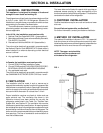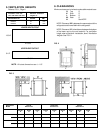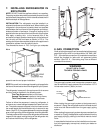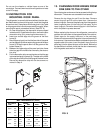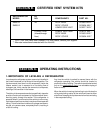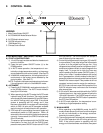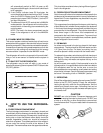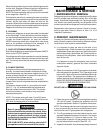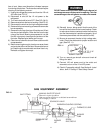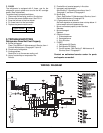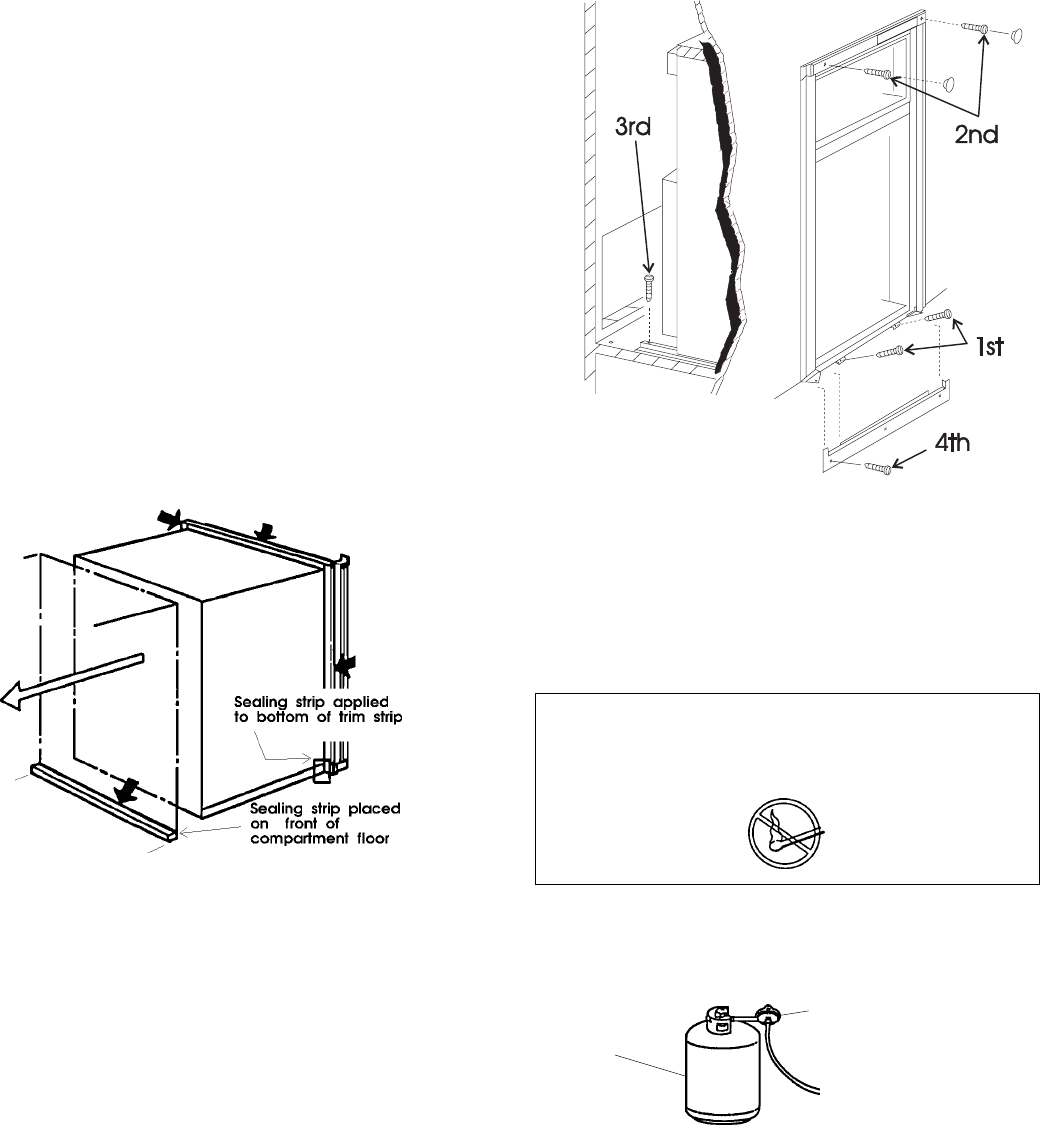
4
7. INSTALLING REFRIGERATOR IN
ENCLOSURE
NOTE: DO NOT install the appliance directly on carpeting.
Carpeting must be removed or protected by a metal or wood
panel beneath the appliance, which extends at least the full
width and depth of the appliance.
INSTALLATION: The refrigerator must be installed in a
substantial enclosure and must be level. When installing the
refrigerator in the enclosure, be certain there is a complete
seal between the front frame of the refrigerator and the top,
sides and bottom of enclosure. A length of sealing strip is
applied to the rear surface of the front frame for this purpose.
Also apply a sealing strip to the foremost floor of the
enclosure and apply a second sealing strip to the bottom of
the trim strip on the front base as shown in FIG. 4. The
sealing should provide complete isolation of the appliance's
combustion system from the vehicle interior.
The dimensions shown in FIG. 3 will give you adequate
space for service and proper installation.
NOTE: Be careful not to damage the sealing strip applied to
the floor of the enclosure when the refrigerator is put in place.
The refrigerator is secured in the enclosure with six screws
and they must be installed in the following order:
First Two Screws installed on front base;
Second Two Screws installed in the top frame;
Third Two Screws installed in the rear base.
Failure to follow the sequence in securing refrigerator in
enclosure can cause leakage between the frame and cabi-
net. The plastic caps are snapped in the front base to cover
the screw heads and the decoration strip is secured to top
frame. (See FIG. 5). Any space between the counter storage
area or ceiling and top of the refrigerator should be blocked.
The heat produced at the rear of the refrigerator will become
trapped in this space, making the top of the refrigerator hot
and reduce the efficiency of the refrigerator.
FIG. 4
8. GAS CONNECTION
Hook up to the gas supply line is accomplished at the manual
gas shutoff valve, which is furnished with a 3/8" SAE (UNF
5/8" – 18) male flare connection. All completed connections
should be checked for leaks with an approved bubble
solution. (See FIG. 6 – Gas tubing may have a different
orientation than shown).
WARNING
DO NOT USE A FLAME
TO CHECK FOR GAS LEAKS.
The gas supply system must incorporate a pressure regu-
lator to maintain a supply pressure of not more than 13-1/2
inches water column, (static) no load.
When testing the gas supply system at test pressures in
excess of 1/2 psig, the refrigerator and its individual shutoff
valve must be disconnected from the gas supply piping
system.
When testing the gas supply system at pressures less than
or equal to 1/2 psig, the appliance must be isolated from the
gas supply piping by closing its individual manual shutoff
valve.
In case detailed instructions on the installation and connec-
tion to the gas supply are required, contact your dealer or
distributor.
PRESSURE
REGULATOR
LP GAS
CYLINDER
TO
REFRIGERATOR
FIG. 5
(One
each
Side)




